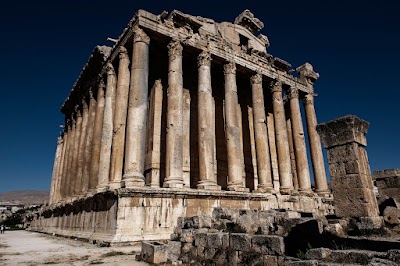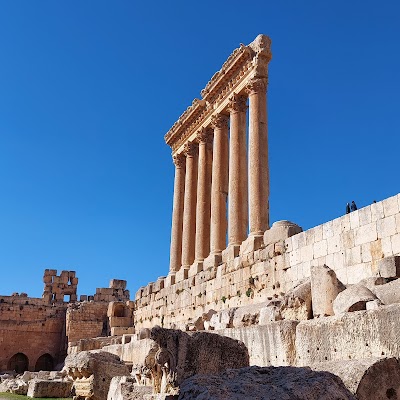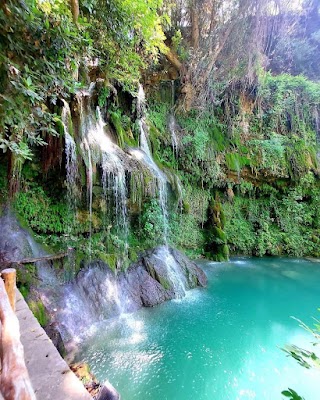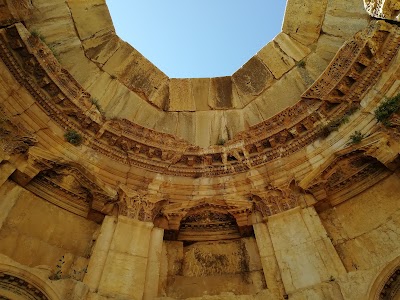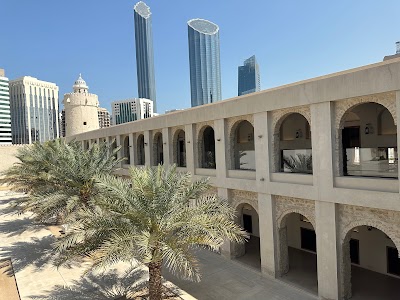Baalbek Roman Ruins (بعلبك)
Related Places
Overview
The Baalbek Roman Ruins, located in the Baalbek-Hermel region of Lebanon, stand as a magnificent testament to the grandeur of Roman architecture and engineering. This awe-inspiring archaeological site is nestled in the fertile Bekaa Valley and has earned its designation as a UNESCO World Heritage Site, making it one of the best-preserved Roman ruins in the world.
With a history that stretches back over 5,000 years, Baalbek has served as a significant cultural and historical hub. Initially settled by the Phoenicians who worshipped the god Baal, the city was known as Heliopolis, or "City of the Sun," during Greek and Roman rule. It was under the reigns of emperors Augustus and Nero that Baalbek flourished as a religious center, witnessing the construction of its most iconic temples.
The Temple of Jupiter is perhaps the most recognizable structure in Baalbek, once the largest temple dedicated to the Roman god of the sky and thunder. The sheer scale of its construction is astonishing, with some stones weighing over 800 tons. While only six of its original 54 columns remain standing, each towering at about 22 meters (72 feet), they continue to leave visitors in awe of their monumental presence.
Adjacent to the Temple of Jupiter is the Temple of Bacchus, which is exceptionally well-preserved. Dedicated to the god of wine and ecstasy, this temple is celebrated for its intricate carvings and ornate decorations. Its grand podium, elaborate friezes, and striking columns showcase the artistic and architectural prowess of the Romans. Unlike the Temple of Jupiter, the Temple of Bacchus remains largely intact, allowing visitors to fully appreciate its grandeur and the artistry that went into its design.
Another notable site within Baalbek is the Temple of Venus, characterized by its unique circular shape and decorative egg-and-dart patterns. This smaller temple is believed to have been dedicated to the goddess of love and beauty, reflecting the diversity of worship and architectural styles present in ancient Rome.
The complex also features the Great Court, an expansive area that once served as a gathering place for pilgrims and the site of various public events. Lined with colonnades and dotted with altars, the court is a testament to the vibrant religious and social life that thrived in Baalbek.
Despite the structures being partially in ruins, the ambiance of the site is undeniably awe-inspiring. As visitors walk through Baalbek, they can almost feel the pulse of ancient ceremonies and hear the whispers of history that envelop each stone and column.
An intriguing aspect of Baalbek is the mystery surrounding the megaliths, particularly the "Stone of the Pregnant Woman." This colossal limestone block, weighing approximately 1,000 tons, poses questions about its purpose and the methods used to transport such massive stones. This adds an air of intrigue to the site, captivating the imaginations of archaeologists and visitors alike.
Baalbek is more than just ancient ruins; it plays a vital role in the local culture and economy. The annual Baalbek International Festival, held in the site's Grand Court, brings together artists and performers from around the world. This festival blends the ancient with the contemporary, celebrating music, dance, and theater in a breathtaking setting.
For foreign tourists, visiting Baalbek is an unforgettable experience. Conveniently located approximately 85 kilometers (about 53 miles) northeast of Beirut, it makes for a feasible day trip. As you explore the ruins, hiring a local guide is highly recommended. They can provide enriching context and captivating stories about the site’s history and significance.
In conclusion, the Baalbek Roman Ruins serve as a striking reminder of the glory of ancient civilizations. From the grandeur of its temples to the enigmatic megaliths, Baalbek offers a unique glimpse into the past, capturing the imagination of all who visit. Whether you are a history buff, an architecture enthusiast, or simply a curious traveler, Baalbek promises a journey through time that is as educational as it is enchanting.


